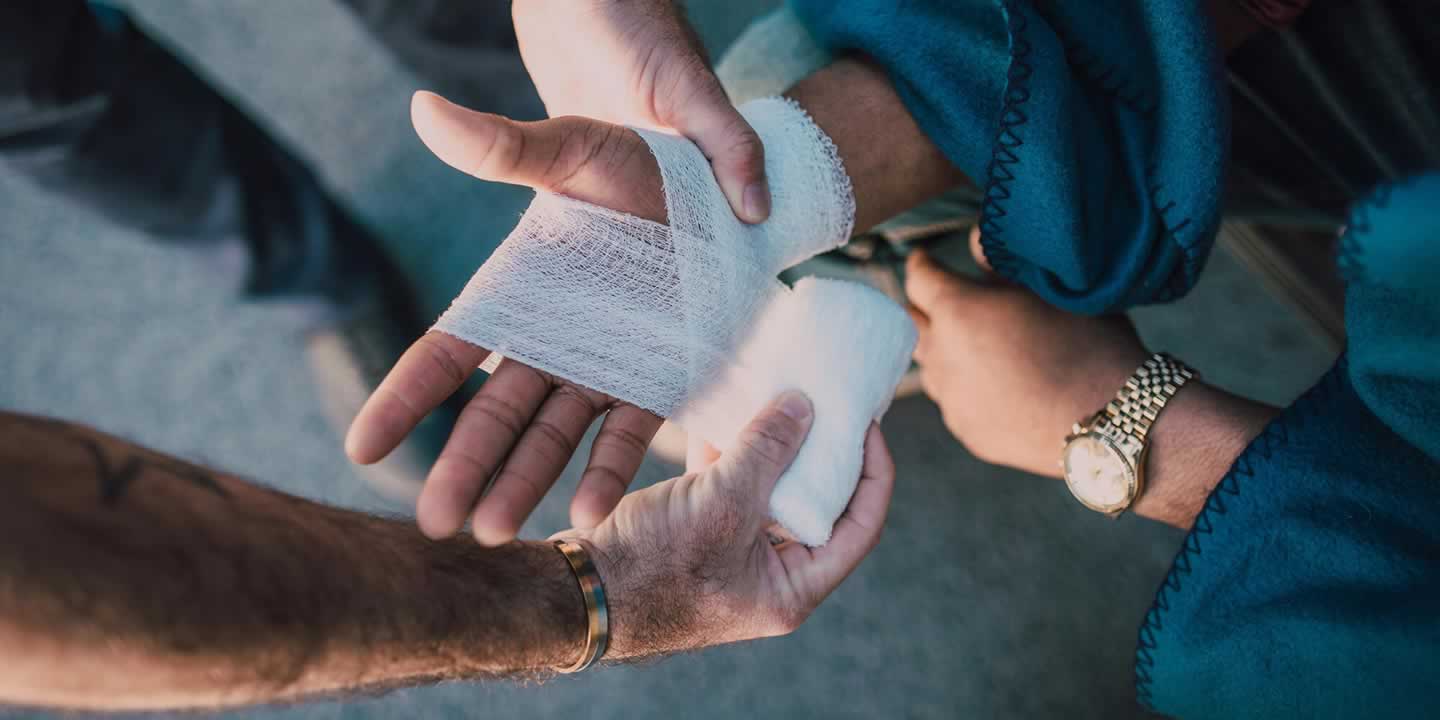
If you get a deep cut, you may be able to treat it without stitches. Learn more about treating a deep cut.
Table of Contents
What is Considered a Deep Cut?
A deep laceration is generally considered over a quarter inch deep, but this also depends on its location. A severe cut in your finger is much less deep than one in your leg. Other indications include cuts with jagged edges or that reveal deeper layers of skin, fat, or muscle. Such cuts often bleed profusely and continuously, indicating that more than just a simple bandage is needed.
How Deep Does a Cut Need to Be for Stitches?
Several factors go into whether you need to get stitches; it’s not just about how deep it is. If the edges of the skin can be pressed together easily, you might manage the wound at home using proper cleansing and bandaging techniques, such as butterfly strips.
Stitches may be required if the cut doesn’t stop bleeding after 10 minutes of applied pressure or if it’s located on a joint or another area that moves a lot. Stitches help in healing by bringing the skin edges together and reducing the risk of infection.
The location of the cut can also influence the need for stitches. Cuts on the face, neck, hands, feet, or over joints are more likely to require stitches due to higher mobility and the risk of scarring. Facial wounds, in particular, might need stitches for cosmetic reasons and healing.
It’s not always clear if something needs stitches; it’s often a judgment call by a medical provider. So, if you’re concerned, it’s best to visit the emergency room or urgent care, like American Family Care.
Treatment
The CDC says when treating a wound, especially if it’s a deep gash, you need to remove any debris or object from the wound with clean hands. Then, apply gentle pressure with a clean cloth or bandage to stop the bleeding. Rinse the wound under running water to remove any dirt or debris. Use soap around the areas of the cut, but not directly in it. Apply an antibiotic ointment if you’re not allergic, and cover with a sterile bandage.
Keeping the laceration clean while it heals is crucial. Make sure to change the bandage daily or whenever it gets wet or dirty. Watch for signs of infection like increased pain, redness, swelling, or pus.
Other Concerns to Keep in Mind
What caused the laceration is extremely important when it comes to considering going to see a medical provider. You should see a medical provider if a metal object or an animal caused the cut. It’s essential if you’re not up to date on your tetanus shot.
If the cut was caused by something with high pressure, such as a pressure washer or oil shooting out from somewhere, go to the ER or urgent care. This is because there’s usually outside debris that can also be shot into the gash.
If it’s been several days since the cut occurred and you notice pus draining from the laceration, that could be a sign of infection. You should seek medical attention.
Where To Go for Treatment
When it comes to treatment for a deep cut, you have a couple of options: ER vs. urgent care. Visiting an urgent care center like American Family Care is suitable for most lacerations that don’t involve severe trauma or life-threatening emergencies. Urgent cares can handle suturing for cuts efficiently and typically at a lower cost and with shorter wait times than emergency rooms.
American Family Care is open seven days a week with extended hours. There’s no need to make an appointment or call ahead. If you have a deep cut you think you need stitches for, find a location near you and come on in.


